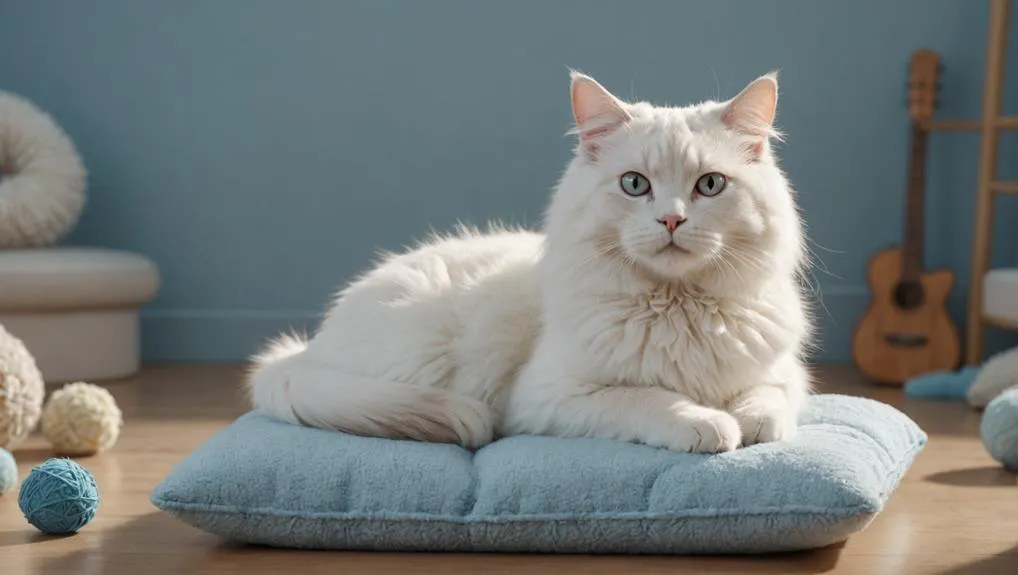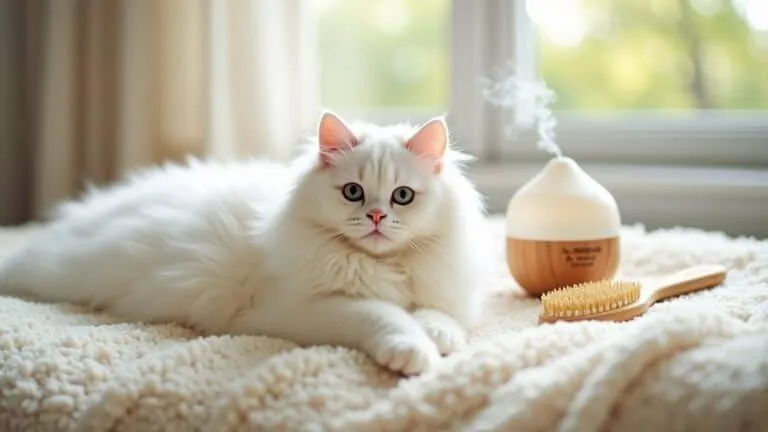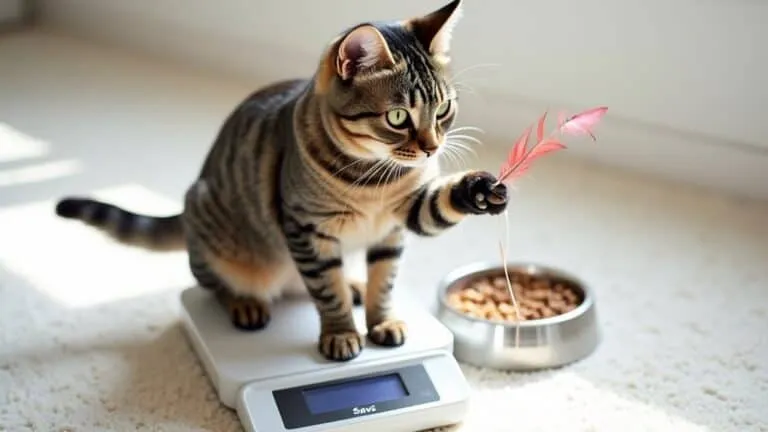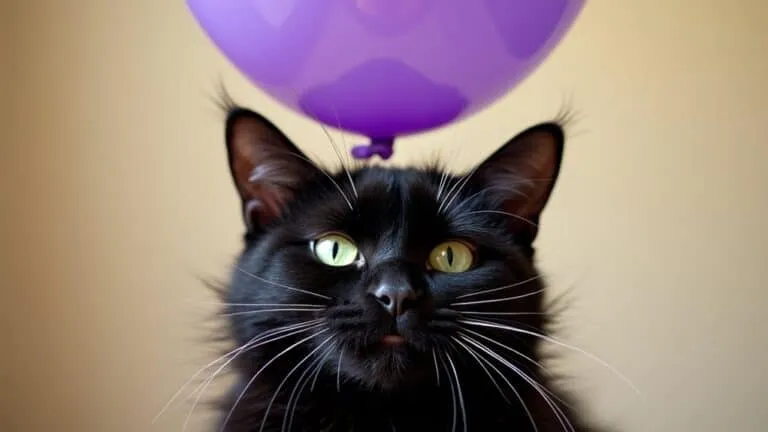The Best Fluffy Pancakes recipe you will fall in love with. Full of tips and tricks to help you make the best pancakes.

When you make grooming a regular part of your daily routine with your cat, you're doing more than just keeping their coat clean and shiny. You're actually taking an active role in making them happy.
Grooming does a lot of good things for your cat's physical health, but it also has a big impact on their emotional well-being. It can help reduce stress and anxiety, and even gives them a sense of security and comfort. Plus, it's a great way to catch any potential health issues early on.
As you're grooming your cat, pay attention to how they're reacting. Are they making happy little sounds, or are they tense and trying to get away? Are they relaxed and enjoying the attention, or are they getting restless? By paying attention to these cues, you can get a sense of what makes your cat happy.
Making grooming a regular habit can have a big impact on your relationship with your cat, too. It's a great way to bond and connect with them, and can even help you understand what makes them tick.
So, take the time to groom your cat regularly, and you'll be rewarded with a happier, healthier pet – and a stronger connection between the two of you.
Cat Happiness Indicators
So, you want to know how to tell if your cat is happy? Well, it's pretty simple.
Happy cats tend to relax and unwind in their own way. They'll often lie down with their paws tucked in and their tail held high with a slight bend at the tip. This means they're feeling confident and relaxed.
You can also tell by the sounds they make. Purring, high-pitched meows, and chirps are all signs that your cat is feeling good. They're engaged and happy, and they're trying to tell you that.
But it's not just about how they act when they're chill. Happy cats also love to play! If your cat initiates playtime and gets into activities like racing or wrestling, that's a clear sign they're having the time of their life.
And let's not forget about food – a happy cat is usually a hungry cat. They'll have a healthy appetite and be ready to chow down.
Finally, happy cats tend to be social butterflies. They'll seek out companionship and initiate contact with humans or other pets. This means they're comfortable in their environment and they're happy to be around others.
Grooming for Health Benefits
Regular grooming is essential for your cat's overall health because it has a huge impact on their skin and coat. By removing dead and tangled fur, you're improving skin circulation and promoting overall coat health. This also helps you detect any health issues early on, like lumps or skin infections, which means you can get your cat to the vet in time.
When you groom your cat regularly, you're not just helping their physical health, but also their mental wellbeing. Cats that are well-groomed tend to be less stressed and anxious because grooming sessions can be really comforting and provide mental stimulation. It makes them feel secure and happy.
By keeping up with regular grooming, you're not just keeping your cat clean by getting rid of dirt and allergens, but you're also contributing a lot to their overall happiness and wellbeing.
Recognizing Vocal Cues
Cats communicate their emotions through various vocalizations, and understanding these cues is crucial to knowing their mood and responding appropriately.
When you're grooming your cat, pay attention to the vocal cues that indicate they're happy. Happy cats tend to make higher-pitched sounds, often engaging in long conversations that express their joy and contentment. You might also hear them purring, which is a strong sign of happiness, usually linked to relaxation and comfort. Some cats even make chortling or trilling sounds, like 'prrrrupttt!', which are clear signs of joy and playfulness.
On the other hand, lower-pitched meows might suggest frustration or a request for attention, indicating that your cat isn't entirely satisfied with their environment. It's also important to remember that quiet cats might only vocalize when they're unhappy, which means silence can sometimes mean discontent rather than happiness.
Body Language of Joy
When you're grooming your cat, its body language can give you a glimpse into its emotional state. By recognizing the physical cues of joy, you can tailor your approach to its unique needs.
So, what should you look for during grooming sessions? Start by paying attention to your cat's posture. When it's feeling joyful, it'll often lie down with its paws tucked in or sprawled out to the sides. This relaxed posture indicates trust and contentment.
Next, take a look at your cat's tail. A happy cat will hold its tail high, with a slight bend at the tip. This is a clear sign of happiness and friendliness.
Your cat's eyes can also give away its emotional state. When it's feeling joyful, its eyes will be half-closed, and it will blink slowly. This is a sign of relaxation and happiness.
Remember to observe your cat's overall demeanor as well. When it's feeling joyful, it will seem calm and at ease. By recognizing these physical cues, you can adjust your grooming approach to better meet your cat's needs.
The Importance of Playtime
Making time for play with your cat is a great way to boost their happiness and overall well-being. This gets them moving and stimulates their natural instincts, which can lead to better health and a lower risk of obesity. Plus, playing together helps you bond with your cat, which is important for their socialization and emotional connection.
Aim to spend at least 20 minutes a day playing with your cat to keep them engaged, stimulated, and happy. As you play, keep in mind your cat's age and adjust your play style accordingly. Kittens are naturally playful, while older cats mightn't have as much energy for play, but still enjoy it.
Using interactive toys and activities can make playtime even more fun for your cat, keeping them curious and reducing stress in their environment.
Sleep Patterns of Happy Cats
So, you've probably noticed that your happy cat loves to snooze in cozy and warm spots. That's because they feel content and secure in their environment.
Sometimes, you might catch them lying flat on their back with their paws tucked in – that's a big sign that they trust you and feel totally relaxed. It shows they're really comfortable and confident in their surroundings.
You might also notice that your cat takes a lot of naps throughout the day. Younger cats tend to nap more, and the amount of sleep they need can vary depending on their age.
But one thing's for sure – happy cats love to sleep near people or other cats they trust. This is because they enjoy positive social interactions and relationships. If your cat is happy, they'll probably snuggle up beside you or their feline friends.
On the other hand, if your cat doesn't want to sleep near others or starts isolating themselves, it might be a sign that they're unhappy or don't feel safe in their environment.
Mutual Grooming for Bonding
So, have you ever seen your cat grooming its feline friend? That's a pretty big deal, trust-wise. This behavior, called allogrooming, is more than just a nice gesture – it's a way for cats to relax and de-stress together.
When cats engage in mutual grooming, they're showing each other that they feel comfortable and safe around each other. It's a way for them to say, 'Hey, I trust you, and I'm happy to be around you.' And that trust is key to building strong bonds between cats.
Mutual grooming is also a way for cats to show affection for each other. By gently licking and nuzzling each other, they're demonstrating that they care about each other's well-being. It's a way for them to say, 'I've got your back, buddy.'
Grooming for Trust
Grooming is a powerful way for cats to show trust and bond with each other. When you groom your cat regularly, you're not only helping them feel more relaxed, but you're also strengthening your bond with them. This is because grooming helps exchange scents, which is a way for cats to mark each other as friends.
When you take the time to groom your cat, you'll both get a boost of oxytocin, a hormone that helps you feel more connected and nurturing. This can really help reduce stress and anxiety, making you and your cat feel more comfortable and content around each other. Plus, grooming helps your cat feel more secure and relaxed, which is essential for their overall happiness.
By paying attention to your cat's grooming habits, you can learn a lot about their social dynamics and emotional state. For example, if your cat is well-groomed, it's a good sign that they're feeling secure and relaxed. On the other hand, if your cat is neglecting their grooming, it could be a sign of stress or anxiety.
Making regular grooming sessions a part of your daily routine can really help you understand your cat's needs better. It's a great way to bond with your cat and show them you care. Plus, it's a simple way to help your cat feel more relaxed and happy, which is what every cat owner wants.
Grooming as Affection
When you groom your cat, you're not just cleaning their fur – you're also showing them love and affection. Just like cats do with each other, mutual grooming is a way to deepen your bond and show your cat that you care.
Grooming is a powerful way to connect with your cat. It's not just about removing dirt and debris from their coat, but also about spreading natural oils that keep their skin healthy and their fur shiny. By doing this, you're demonstrating your affection and trust for your cat.
Regular grooming sessions can do wonders for your relationship with your cat. It strengthens your bond, making your cat feel comfortable and secure around you. It also reduces stress and anxiety in both you and your cat by releasing positive hormones like oxytocin. This, in turn, builds trust and confidence between you two.
But that's not all. Grooming can also bring happiness and contentment to both you and your cat. The positive hormones released during grooming can put you both at ease, making you feel happy and relaxed in each other's company.
Grooming for Bonding
Grooming with your cat is a great way to strengthen your bond with them. It's an intimate activity that can bring you closer together.
As a cat parent, you can make grooming a part of your daily routine. This is something that cats naturally do with each other, and it releases oxytocin, also known as the 'love hormone'. This hormone helps build trust and bonding. By mimicking these natural behaviors, like licking and nuzzling, you can create a strong emotional connection with your cat.
This is especially helpful for shy or timid cats. It can help them feel more confident in their social interactions. Regular grooming sessions can make your cat feel happier and more content. This, in turn, can create a positive emotional state for them.
Eating Habits of Happy Cats
You can tell if your cat is happy by looking at their eating habits. This often reflects how content and well-being they're overall.
Happy cats usually have a healthy appetite and eat their meals with enthusiasm and consistency. This shows they're in a positive environment and engaged with what's around them.
If your cat is happy, they'll probably show more interest in food. They'll get excited for mealtime and be really into eating, which indicates they're in a happy state.
Some cats will even try to get special treats by pawing or meowing. This is a sign they're engaged and playful, which is important for their happiness.
It's also important for your cat to have a consistent appetite. This helps keep them healthy and avoids problems like dental care issues.
When your cat is happy, they'll show it during mealtimes. They'll be enthusiastic and excited, which reflects how content they are with their environment.
Reducing Stress Through Grooming
Reducing Stress Through Grooming
Grooming is a great way to help your cat feel more relaxed and secure. It's a special bonding experience that involves physical touch, which can really calm them down. When you brush your cat regularly, you can reduce their anxiety and strengthen your relationship with them.
The physical touch of grooming stimulates the release of oxytocin, a hormone that promotes relaxation and reduces stress. Having a regular grooming routine also creates a predictable environment for your cat, which is linked to lower stress and anxiety levels.
To make grooming a positive experience for your cat, use gentle techniques and offer treats as rewards. This will help them get used to the process and feel more comfortable. Pay attention to your cat's body language during grooming, and adjust your approach if they seem uncomfortable.
Frequently Asked Questions
Does a Cat Grooming Mean They're Happy?
So, you're wondering if your cat is happy when they're grooming themselves? Well, the truth is, grooming is a normal part of being a cat. It's like their version of self-care. They do it to relax and relieve stress, which is great for their mental health. However, just because your cat is grooming doesn't necessarily mean they're happy. It's just one aspect of their emotional state.
Is Grooming Comforting for Cats?
So, you want to know if grooming is comforting for cats? Well, the answer is yes, it definitely is. Gentle grooming routines can really help your cat relax. But that's not all – it also strengthens the bond between you and your cat through physical affection. This, in turn, contributes to their emotional well-being and overall happiness.
Do Cats Stop Grooming When Depressed?
When you notice changes in your cat's behavior, it's worth taking a closer look. One significant change to watch out for is a decrease in grooming. Cats are meticulous about their cleanliness, so if they stop grooming, it can be a sign of depression.
This grooming trigger can reveal underlying emotional struggles that your cat might be facing. It's crucial to recognize these changes and take action to help your cat feel better.
Do Cats Feel Better After Being Groomed?
So, do cats really feel better after being groomed? The answer is yes! You'll notice that after using various grooming techniques and tools, your cat appears more relaxed. It makes sense, right? Grooming benefits include removing loose fur, reducing shedding, and promoting healthier skin, which all add up to making them feel better overall.
Final Thoughts
So, you know that cat happiness is about more than just one thing – it's about physical and emotional well-being. By paying attention to the sounds your cat makes, their body language, and how they sleep, you can tell if they're happy.
One way to make your cat happy is to play with them regularly. A good diet is also important, as is mutual grooming. Grooming is especially great because it helps create a strong bond between you and your cat, and it reduces stress.
Plus, it has lots of health benefits that contribute to overall happiness. By focusing on these things, you can create a happy and healthy environment for your cat.








